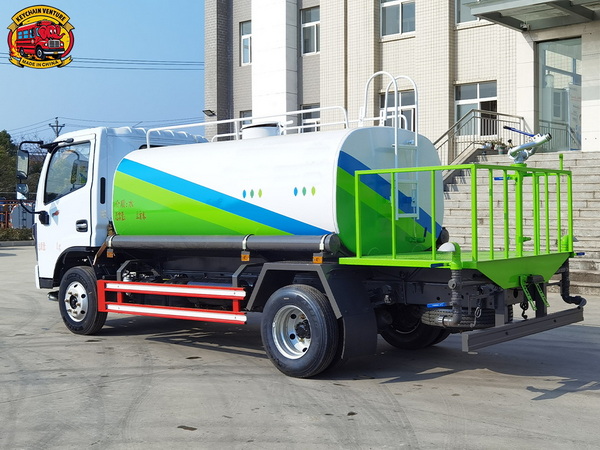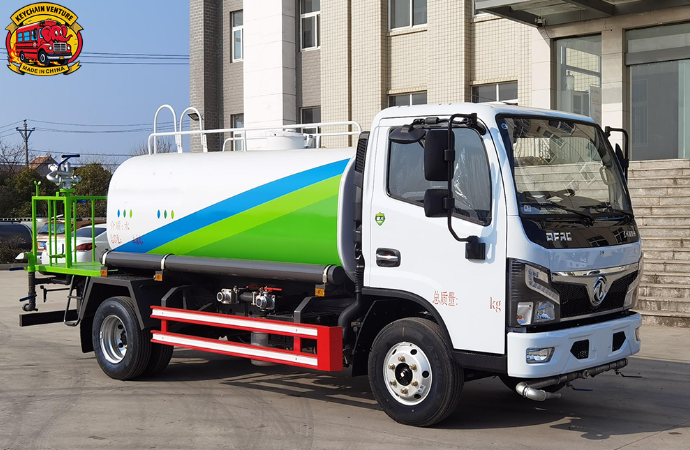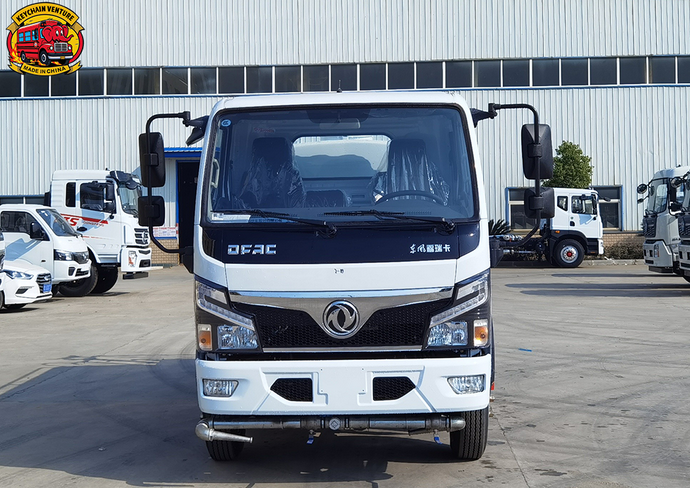Views: 222 Author: Amanda Publish Time: 2025-11-07 Origin: Site








Content Menu
● Understanding Water Truck Roles and Load Characteristics
● Core Licensing Pathways for Water Truck Operators
>> CDL Basics
>> Endorsements for Liquid Freight
>> Site-Specific and Local Variations
● How to Obtain Tanker Endorsements and Related Certifications
>> Practical Training and Resources
● Safety, Operations, and Best Practices for Water Trucks
>> Pre-Trip and Onsite Inspections
>> Handling and Driving Techniques
>> Environmental Considerations
>> Maintenance and Reliability
● Industry Trends and the Role of Technology
>> Digital Tools and Telematics
● Real-World Applications and Case Insights
● Regulatory Landscape and Compliance
● Practical Guidance for KeyChain Venture and Partners
● FAQs
>> 1. What is a tanker endorsement, and why is it important for water truck operators?
>> 2. Do water truck drivers always need a CDL with tanker endorsement to work on a job site?
>> 3. What training should a water truck operator pursue beyond the CDL?
>> 4. Are Hazmat endorsements ever required for water trucks?
>> 5. What determines the need for a tanker endorsement in water trucking?
Water trucks serve essential roles across construction, mining, agriculture, firefighting support, and municipal dust control. They move large volumes of water from sources to sites requiring moisture, dust suppression, soil stabilization, irrigation, or firefighting support. Because these vehicles routinely carry significant liquid loads, licensing, endorsements, and safety training are critical to ensuring safe on-road operation and on-site efficiency. For companies like KeyChain Venture Co., Ltd., the ability to deliver high-performance water distribution solutions hinges not only on equipment quality but also on the competencies of the operators who run water trucks, including understanding regulatory requirements, best practices, and jobsite-specific procedures. This article delves into what licenses and endorsements are typically required, why they matter, how to obtain them, and how modern Water Trucksintegrate safety, efficiency, and compliance on the job.

Water trucks are purpose-built assets designed to transport and discharge large quantities of liquid water. They can feature single or multi-compartment tanks, spray bars, hoses, pumps, and spray nozzles that enable precise distribution for tasks such as dust suppression on unpaved access roads, soil moisture conditioning for compaction, erosion control, agricultural irrigation, and environmental management on worksites. Many water trucks operate at GVWRs well above 26,000 pounds, placing them in Class B or Class A CDL territory in most regulatory regimes. The load characteristics of water trucks—especially the weight shifts that occur during pump operation and distribution—have direct implications for driving technique and safety. Operators must understand how liquid dynamics, truck center of gravity, and dynamic braking affect handling, especially on uneven terrain or slopes. This practical emphasis on load behavior underscores why tanker endorsements and related training are commonly required for water truck operations on public roadways or when transporting water between locations on a project.
- A Commercial Driver's License (CDL) is typically required for any vehicle over the standard weight threshold used in water trucking, particularly when driving on public roads. The CDL categories most relevant to water trucks are Class B (single-unit trucks heavier than 26,001 pounds) and Class A (combination vehicles exceeding that weight threshold). For many water trucks, Class B is sufficient when the vehicle is a single unit with a tank and no trailer, whereas Class A is necessary for tractor-trailer configurations or multi-part equipment frequently used in large-scale water distribution operations. This framework aligns with general regulatory practice across jurisdictions and mirrors industry guidance for tanker operations in the water sector.
- In addition to the base CDL, drivers must typically meet age, medical, and background checks, then pass both knowledge and skills assessments relevant to their vehicle type and operating context. These prerequisites establish a baseline safety standard for all water truck operators and help ensure consistent competencies across the fleet.
- Tanker Endorsement (often labeled “N”): The tanker endorsement is designed to certify proficiency in handling vehicles that transport liquids in tank configurations. For water trucks, this endorsement is frequently required when the vehicle includes a tank of sufficient size or configuration that makes liquid load management a critical safety consideration. The endorsement process typically involves a written knowledge test focused on liquid cargo dynamics, driver responsibilities, inspection and maintenance of tank systems, and safe operation practices. In many regions, the endorsement is mandatory for water trucks carrying water in volumes exceeding thresholds such as 1,000 gallons, although exact thresholds can vary by jurisdiction.
- Hazmat Endorsement (often labeled “H”): If a tanker operation also involves hazardous materials, the hazmat endorsement may be required in addition to the tanker endorsement. In many jurisdictions, this endorsement requires additional background checks, security clearances, and specialized training. For standard water distribution tasks, hazmat endorsements are generally not necessary unless the operation involves transporting water that has hazardous additives or other regulated contents.
- Air Brake Endorsement: If the water truck relies on air brakes, the operator typically needs an air brake endorsement, which is commonly required for heavy vehicles with air braking systems, including many water tank configurations. This endorsement ensures familiarity with air brake inspection, operation, and safety procedures.
- Some sites or jurisdictions offer exemptions for intra-site movements or farm/agricultural operations where vehicles travel only on private roads or unpaved paths. In these cases, the strictness of endorsement requirements may differ, and company-specific training may substitute for certain public-road endorsements. It is essential to verify local regulations and project-specific policies to determine the exact licensing requirements for a given water truck operation.
1) Confirm Eligibility: Ensure possession of a valid CDL (Class A or Class B, depending on the vehicle) and meet age requirements. Eligibility often includes a clean driving record and medical certification.
2) Prepare for the Knowledge Test: Study materials covering tanker-specific concepts, including liquid load dynamics, vehicle inspection of tank systems, safe driving practices for tankers, and emergency procedures. Practice tests are widely available, and many training providers offer targeted preparation for the tanker endorsement.
3) Schedule and Pass the Knowledge Examination: Take and pass the tanker endorsement written test. If hazmat endorsement is sought, prepare for and pass the hazmat knowledge test as well.
4) Skills Test: Some jurisdictions require a skills test focused on operating a tanker-equipped vehicle. This test demonstrates the ability to conduct pre-trip inspections, properly connect and manage loading equipment, and safely distribute liquid cargo.
5) Background Checks and Additional Clearances: For hazmat endorsements, a Transportation Security Administration (TSA) background check may be required.
6) Finalize Endorsement: Once all tests and checks are passed, add the tanker endorsement (and hazmat if applicable) to the CDL. Ensure the new endorsement is reflected on the driver's license and in the employer's records.
- Formal training programs offered by trucking schools or employer-sponsored programs can prepare drivers for the tanker endorsement, including practice tests, scenario-based learning, and simulated on-road exercises.
- On-the-job training is valuable for building familiarity with specific water-carrying configurations, spray equipment, pump systems, and site-specific safety protocols. This training often emphasizes pre-trip inspections, system checks, load distribution, and emergency response planning.

- Conduct a thorough pre-trip inspection of tires, brakes, lights, horn, steering, load integrity, tank mounting, pump system, hoses, and spray equipment. Any signs of wear, corrosion, or leaks should be addressed before departure.
- Inspect the water tank and associated equipment for cleanliness, integrity, and proper seals. Ensure that safety devices, such as emergency shutoffs and protective guards, are in place and functional.
- Manage speed and acceleration carefully because the liquid load can shift within the tank (slosh effect). Abrupt maneuvers, sudden braking, or sharp turns should be avoided to minimize rollover risk and cargo instability.
- Maintain a safe following distance, account for extended stopping distances, and adjust driving style for wet or uneven surfaces. When traveling on slopes or uneven terrain, use lower gears and smooth throttle application to preserve stability.
- On inclined or curved routes, plan for reduced performance and avoid overloading. Keep a close watch on oil, water, and coolant temperatures, as well as engine performance to prevent overheating under heavy loads.
- Wear appropriate PPE such as hard hats, safety glasses, gloves, steel-toed boots, and high-visibility clothing when loading, unloading, or operating around water distribution systems.
- Implement precautions when working around agricultural or construction sites where other heavy equipment operates in close proximity.
- Ensure spill response kits and absorbents are readily available and that workers know how to apply them in case of minor leaks or spills.
- Conform to regulations concerning water discharge, soil erosion control, and runoff mitigation. Avoid contaminating surface water, groundwater, or sensitive environments when distributing water on-site.
- Use proper containment measures for any accidental spills and promptly report issues to supervisors or site safety personnel.
- Adhere to a routine maintenance schedule for pumps, valves, hoses, spray bars, filtration systems, and tank integrity. Regular checks prevent breakdowns during critical operations.
- Keep spare parts and common wear items on hand to minimize downtime on busy job sites.
- Fleet management platforms enable real-time monitoring of water truck locations, water levels, and pump performance. Telematics improve route planning, fuel efficiency, and preventive maintenance scheduling.
- Data analytics help operators optimize spray patterns, reduce water waste, and improve dust control outcomes on construction sites.
- Modern water trucks are becoming more fuel-efficient, quieter, and capable of electric or hybrid propulsion in some markets, aligning with environmental and regulatory goals.
- Advanced spray bar designs and nozzle technology improve targeting and reduce over-spray, enhancing environmental stewardship on worksites.
- Telemetry-enabled safety features, including load-sensing systems and automated shutoffs, help prevent accidental discharges and improve operator awareness on challenging terrains.
- Pre- and post-trip inspection apps streamline compliance documentation and enable traceability for safety audits.
- Construction dust control: Water trucks reduce airborne particulates on haul roads and drill sites, contributing to air quality and worker safety.
- Mining operations: Portable water distribution supports dust suppression and ore processing workflows, enabling safer and more efficient operations.
- Large-scale irrigation: In agricultural corridors and orchard management, water trucks deliver targeted irrigation to optimize yields while conserving water resources.
- Emergency response and flood management: Water trucks provide rapid water distribution for firefighting and disaster response when fixed pipelines are unavailable.
- Across many jurisdictions, a CDL with an appropriate endorsement is required for operating water trucks on public roads. The exact combination of CDL class and endorsements—such as tanker endorsement (N) and potentially hazmat (H)—depends on local regulations and the specific vehicle configuration.
- Tank vehicle designs must meet safety standards for tank construction, mounting, labeling, and emissions. Regular inspections ensure ongoing compliance with regulatory and manufacturer requirements.
- Employers bear responsibility for ensuring drivers have up-to-date endorsements, proper training, and compliance with site-specific safety procedures. Contractors and fleet operators should maintain documentation to demonstrate regulatory compliance during audits or inspections.
- For KeyChain Venture Co., Ltd., aligning licensing, endorsement training, and fleet safety with international customers requires an integrated approach. Emphasize licensing transparency, safety certifications, and maintenance documentation to reassure partners about reliability and compliance.
- Develop standardized operator training modules focusing on water truck operation, load management, environmental protection, and emergency response. Include practical demonstrations, risk assessments, and scenario-based drills to improve readiness across diverse job sites.
- Implement a digital documentation system to track endorsements, medical certificates, driver training completion, and vehicle inspections. This enables consistent audits, smoother onboarding, and improved safety culture across the organization.
Water truck operations involve more than wheel and engine power. They demand a clear understanding of licensing, endorsements, safety practices, and regulatory compliance to ensure safe and efficient performance on diverse job sites. A tanker endorsement is commonly required for water trucks carrying substantial liquid cargo, with exact rules varying by jurisdiction. For Chinese and international projects, aligning licensing and training with global standards supports reliable service delivery, reduces risk, and proves the ability to manage water distribution operations at scale. A well-trained water truck workforce enhances dust control, irrigation, environmental stewardship, and disaster response capabilities, reinforcing KeyChain Venture Co., Ltd.'s leadership in high-performance commercial vehicle solutions.

A tanker endorsement certifies the ability to operate vehicles that transport liquid cargo, recognizing knowledge of load dynamics, safety procedures, and inspection practices. For water trucks carrying substantial water loads, the endorsement is a key regulatory and safety requirement when operating on public roads.[1][2]
On private job sites with restricted road use, a CDL may not be strictly required if the operation is contained within the site's boundaries and local exemptions apply. However, for any movement on public roads or in projects involving shared infrastructure, a CDL with tanker endorsement (and possibly hazmat or air brake endorsements) is typically required.[3][1]
Beyond the CDL, operators should pursue tanker endorsement training, air brake training if applicable, and site-specific safety programs. Hands-on instruction covering pump operation, spray bar control, load management, pre-trip inspections, and emergency response improves on-site performance and safety.[4][10][1]
Hazmat endorsements are generally not required for standard water distribution unless the water or additives being hauled are classified as hazardous materials. Some jurisdictions may have specific exceptions or requirements for certain additives used in dust control or remediation projects, so verify local regulations for each project scope.[2][3]
The key determinant is whether the vehicle carries a liquid load meeting jurisdictional thresholds (often around 1,000 gallons or more). If the tank configuration, loading practices, or regulatory rules trigger tanker endorsement requirements, the driver must obtain the endorsement before operating the vehicle on public roads.[2][3][4]
[1](https://haletrailer.com/blog/what-is-a-tanker-endorsement/)
[2](https://blog.knichellogistics.com/news/lets-talk-tanker-endorsements)
[3](https://dol.wa.gov/driver-licenses-and-permits/commercial-driver-licenses-cdl/endorsements-and-restrictions)
[4](https://schneiderjobs.com/blog/what-is-tanker-endorsement)
[5](https://www.thetruckersreport.com/truckingindustryforum/threads/every-new-cdl-driver-needs-tanker-endorsement.2362508/)
[6](https://www.reddit.com/r/Truckers/comments/10ae007/am_i_allowed_to_drive_a_large_water_truck_without/)
[7](https://www.indeed.com/career-advice/finding-a-job/how-to-become-tanker-truck-driver)
[8](https://www.midwesttruckdrivingschool.com/how-to-get-your-tanker-endorsement-in-2025-ultimate-step-by-step-guide/)
[9](https://cowtownexpress.com/blog/your-complete-guide-to-tanker-endorsements)
[10](https://ledwell.com/how-to-operate-a-water-truck/)